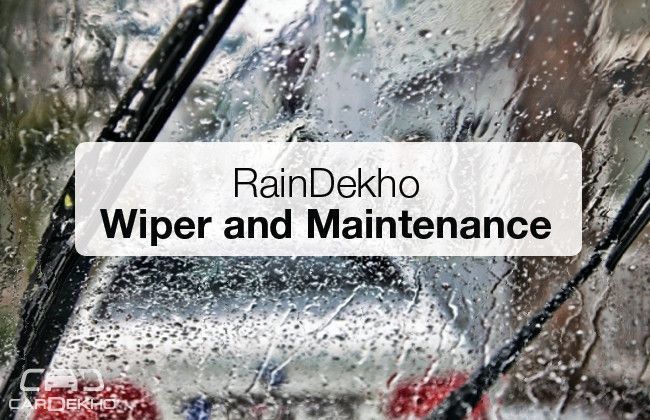After the Brake - Brake and Maintenance
Modified On Aug 12, 2014 04:53 PM By Bala Subramaniam
- Write a comment
Driving a car is fun during monsoon as you enjoy the rain outside without getting wet. But the monsoons also bring along with them a higher rate of accidents and stopping the car on time becomes more crucial. Keeping the brakes healthy is one way of assuring your safety and the car's.

Braking causes friction and heat leading to wear and tear. In our country’s stop and go traffic conditions, the brakes lose their ability sooner. It is important to regularly check the brake pads and shoes for wear and tear. Symptoms for uneven brake wear include vibration of steering wheel, vehicle veering off in a direction and pulsing brake pedal while braking.
Braking systems use braking fluids to apply pressure on the brakes when you press the brake pedal. The brake fluid will degrade in case of overheating, contamination or when moisture is absorbed. Changing brake oil regularly helps in better braking performance.
When driving in rain, the brakes are moistened by the rain water thus decreasing their stopping efficiency. And if the brakes are not maintained properly, this increases the chances of brake failure.
Maintenance of the braking system:
Keep an eye on the level of brake fluid. Let’s keep the brakes well fed and not leave them high and dry. Check the brake fluids often and replace every two years or 50,000 kms or as requested by your car manual.
Healthy brake pads are a must to ensure effective braking. It’s better to review each brake pad frequently. While their average life is around 25.000 km, they can become blunt because of our stop and go traffic lifestyle easily before their recommended expiry date. Keep an eye on them and change them if necessary. Brake shoes should also be checked and changed regularly.
Ensure your brake lights are working fine. Failure of brake lights is one of the main reasons for accidents. Check them regularly and replace them unless you want to get back-footed in the car.
Do not make any modifications to the original brake system. Always follow the car manual for instructions and guidelines given by the manufacturer.
Verify whenever possible the power of braking of each of the four wheels with a brake meter/brake tester. Don't forget to check the effectiveness of the circuit.
Symptoms that something is wrong:
While braking, if your car is not slowing down as much as it is supposed to, it may be because of decreased levels of brake fluid.
If the car leaks any fluid while slowing down, that means the brake pump is in poor condition and on its way out. Check and replace them before it grows into a bigger problem.
Regularly check the wear and alignment of the tyres. Bad tyres or badly aligned tyres lead to brake discs that are badly located making the brake adjustment uneven.
During monsoons, clean the brake pads regularly as the brakes will absorb water becoming inefficient while braking due to soft damping. Look out for soft brake pedal, which could mean that air has entered the circuit or that the brake liquid level is less.
One of the obvious indications that your brakes need to be changed is the squealing sound when you come to a stop. This happens when the brake pad wears down to almost a quarter of its size and the metal indicator that has been included begins to touch the rotor. It is also possible that the metal indicator may have worn off or may not be there at all. In these cases, there are other signs to confirm the brake pad change when it takes longer to stop or if the brake pedal travel is longer than usual.
Also keep in mind to leave a healthy distance between yourself and the vehicle before you, look out for puddles and don’t drive fast. Happy Monsoon. Drive Safe.










